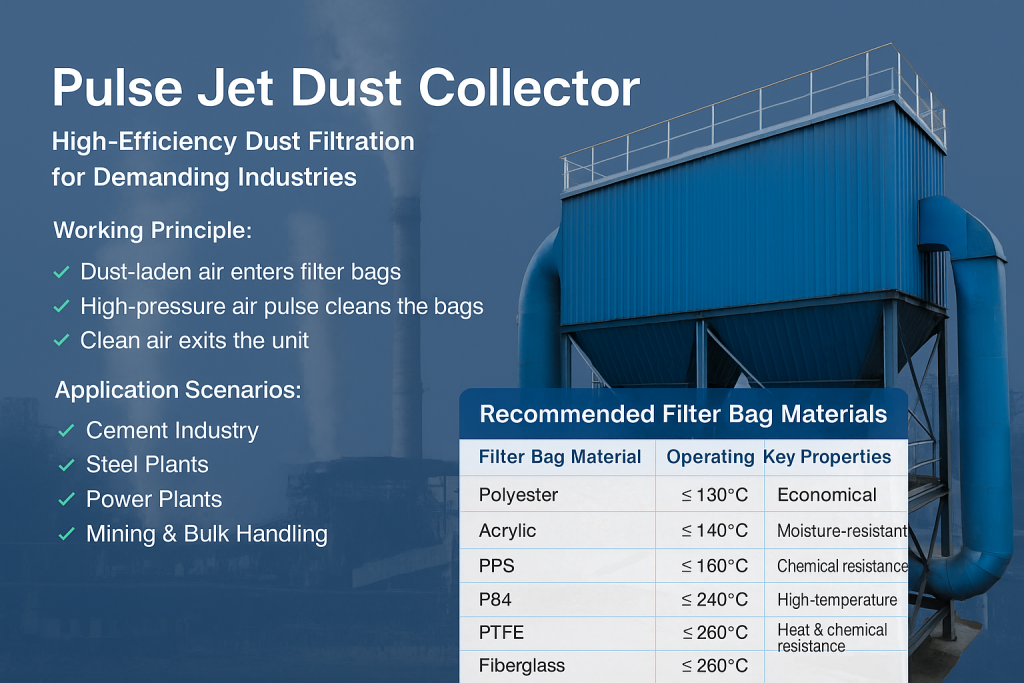The Pulse Jet Dust Collector is one of the most widely used and efficient types of industrial dust collection systems. It is known for its strong filtration performance, compact design, and ease of maintenance, making it ideal for continuous operation in heavy-duty industrial environments.
A Pulse Jet Dust Collector uses filter bags (also called dust collector bags) to capture airborne dust from industrial processes. Here’s how it works:
This self-cleaning mechanism ensures continuous and efficient operation.

Pulse Jet Dust Collectors are widely used in industries where high dust loads and fine particulates are present:
To ensure optimal performance and long service life, consider the following:
Different operating environments require different filter media. Below are common materials used in Pulse Jet Dust Collectors
| Filter Bag Material | Operating Temp | Key Properties | Applications |
|---|---|---|---|
| Polyester | ≤130°C | Economical, good for dry & non-corrosive gas | Woodworking, General Industry |
| Acrylic | ≤140°C | Moisture-resistant, moderate acid resistance | Biomass Boilers, Humid Processes |
| PPS | ≤160°C | Excellent chemical resistance | Coal-fired boilers, Kilns |
| P84 | ≤240°C | High-temperature and fine dust filtration | Cement Kilns, Incineration |
| PTFE | ≤260°C | Superior chemical & heat resistance | Waste Incineration, Acidic Fumes |
| Fiberglass | ≤280°C | High-temp but requires membrane for dust cake | Glass, Steel Furnaces |
Understanding the Risk: Dust Explosion Fundamentals Dust explosions represent one of the most serious safety hazards in industrial
Introduction Efficient particulate collection is central to modern industrial air pollution control, making the baghouse a familia
By Omela Filtration — Industrial Filtration Experts 1. Industry Background and the Real Problem In pulse-jet dust collector syst